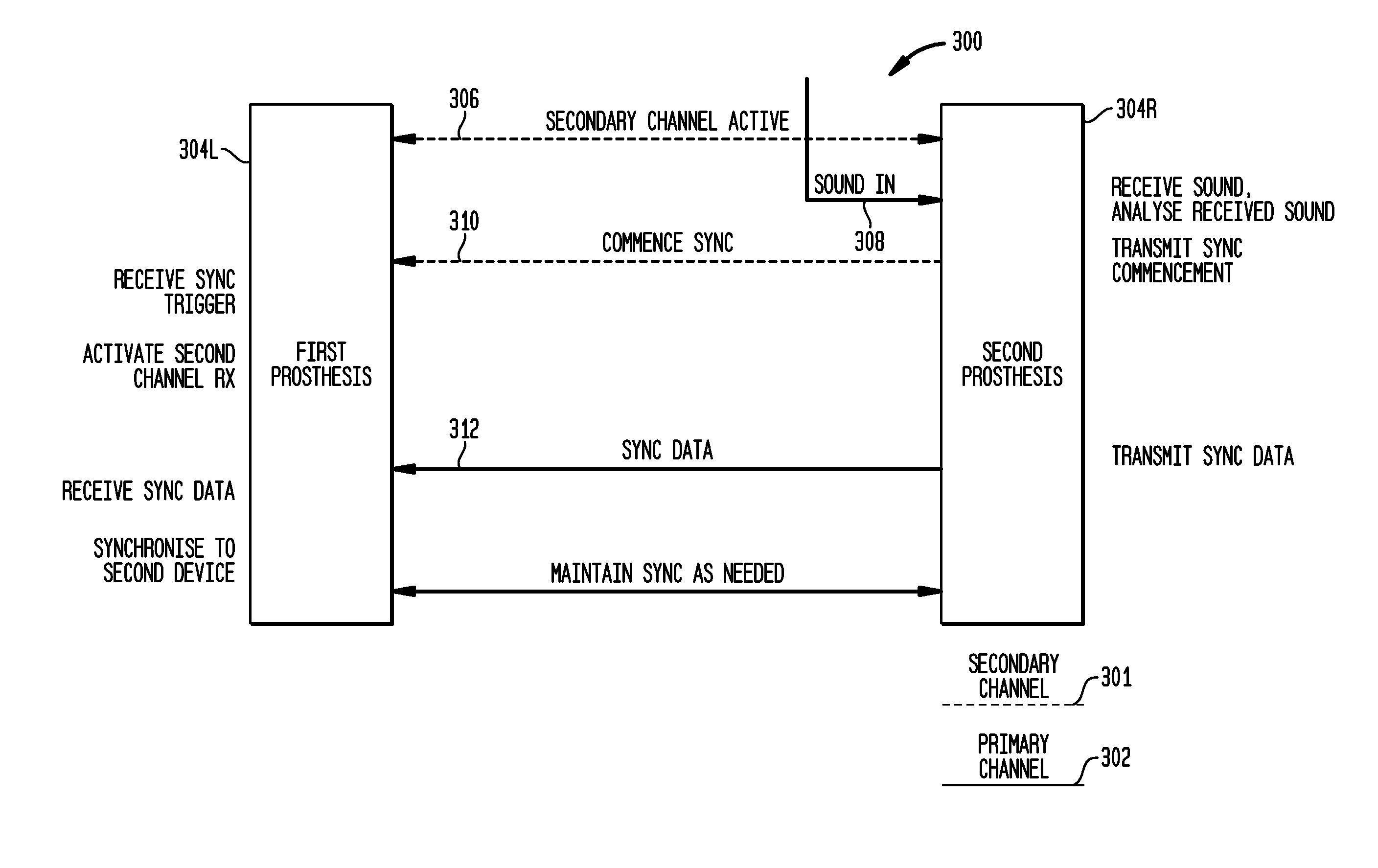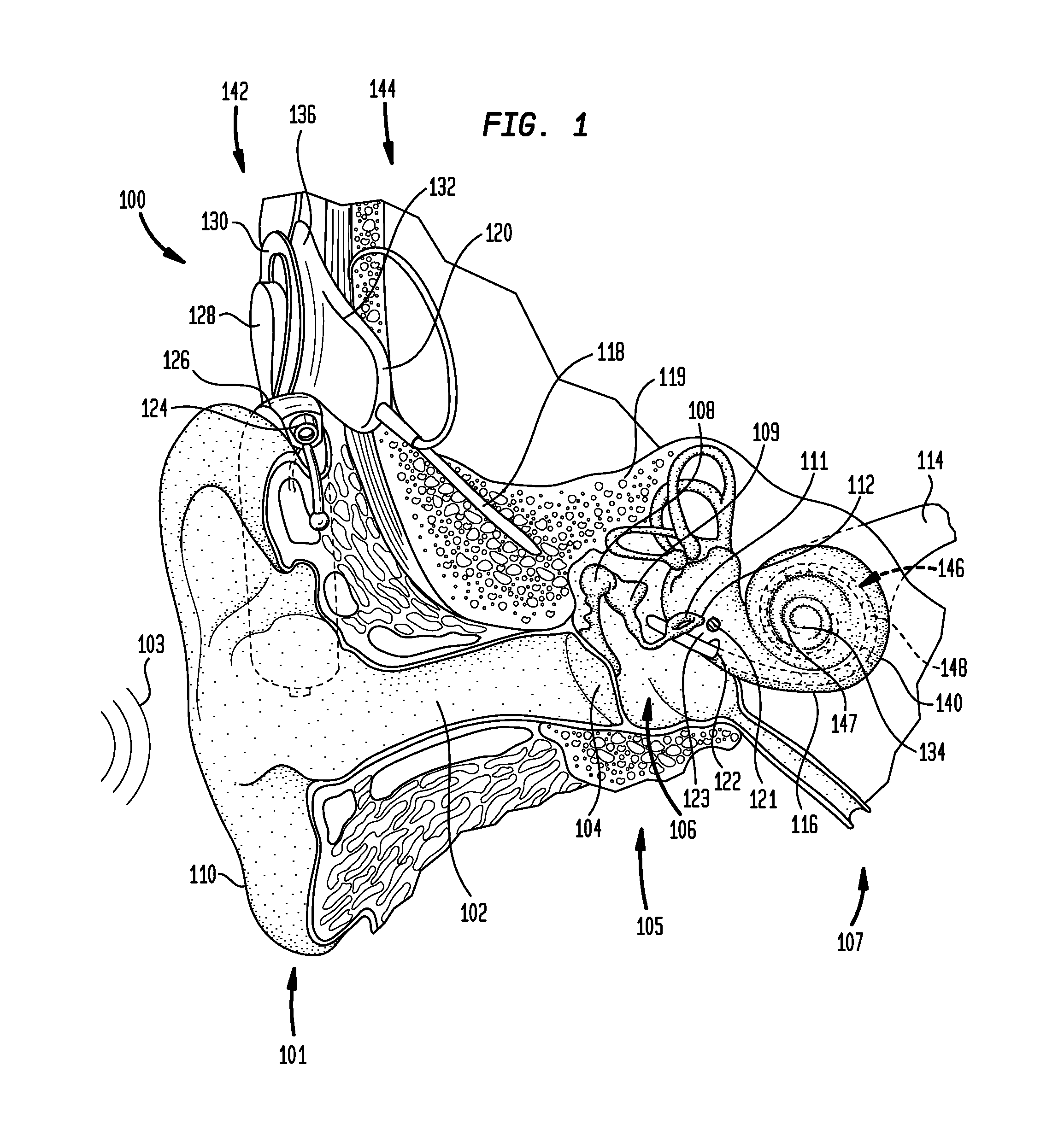Synchronization in a bilateral auditory prosthesis system
a bilateral and auditory technology, applied in the field of auditory prosthesis, can solve the problems of incorrect delivery of binaural cues, affecting spatialisation capability, and affecting the efficiency of synchronization
- Summary
- Abstract
- Description
- Claims
- Application Information
AI Technical Summary
Problems solved by technology
Method used
Image
Examples
Embodiment Construction
[0025]Aspect of the present invention are generally directed to synchronization between a first auditory prosthesis and a second auditory prosthesis of a bilateral auditory prosthesis system. In this system, a primary wireless communications channel, usable for synchronizing the first and second prostheses, may be disabled to, for example, conserve power. Then, upon detection of a trigger in sound received by one or more of the prostheses, the primary wireless communication channel is enabled and the prostheses synchronized using the primary wireless communication channel.
[0026]Embodiments of the present invention are described herein primarily in connection with one type of hearing prosthesis, namely a cochlear prostheses (commonly referred to as cochlear prosthetic devices, cochlear implants, cochlear devices, and the like; simply “cochlea implants” herein.) Cochlear implants generally refer to hearing prostheses that deliver electrical stimulation to the cochlea of a recipient. A...
PUM
 Login to View More
Login to View More Abstract
Description
Claims
Application Information
 Login to View More
Login to View More - R&D
- Intellectual Property
- Life Sciences
- Materials
- Tech Scout
- Unparalleled Data Quality
- Higher Quality Content
- 60% Fewer Hallucinations
Browse by: Latest US Patents, China's latest patents, Technical Efficacy Thesaurus, Application Domain, Technology Topic, Popular Technical Reports.
© 2025 PatSnap. All rights reserved.Legal|Privacy policy|Modern Slavery Act Transparency Statement|Sitemap|About US| Contact US: help@patsnap.com



